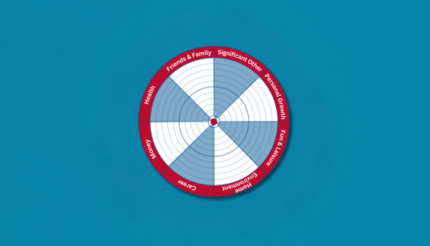The more content you have out there — on the web or in newspapers and magazines — the easier it becomes for people to find you. Every piece of content is like a billboard that helps you promote your brand and lets people get to know you.
Writing and creating content may seem complicated, but it can be easier than you think. Moreover, the more you learn about how to do it correctly, the more effective your content strategy will be.
Let’s see what types of content you can use to promote your business, and how to get started with each of them.
1. Written Content
Written content is one of the pillars of your content marketing strategy. It can come in many forms, from blog posts to eBooks to emails:
- Blogs
Every website should have a blog. It enables you to add fresh content to the site regularly and keep it active. Google favours websites that publish new, relevant information. To increase your visibility online, use Google Analytics to identify topics that perform well and the SEO (Search Engine Optimisation) terms you should include in your content to make it easy for people to find you.
Another thing to remember when writing blogs is that people like really useful content. So, write to help your readers solve their problems. Remember that your personality and the character of your brand should shine through. You can pay someone to write for you, but be sure to pick a writer who understands your voice and can use it to make your content “sound like you”.
- Articles
You can write articles for magazines or online publications. Pick the periodicals or platforms where you think your audience will be reading and write about topics that will pique their interest. For example, you could write about your business, your industry, or anything you’re knowledgeable about and where you can add value for your readers.
- Newsletters
Newsletters are helpful for keeping in touch with your past and current customers. Make them engaging by including testimonials, introducing team members, explaining how to use your product and services, and including educational content.
- Social Media posts
A social media presence increases your online visibility like nothing else and makes it easy for you to communicate directly with your audience. Research good SEO terms you should be using to expand your reach. As with your blog posts, and perhaps even more so, you want your content to reflect your personality. Show people who you are and what you and your business stand for.
- Booklets and white papers
Booklets and white papers are ideal for sharing information. They’re more complex and formal than blogs or articles and require more research and writing skills. The results are worth the effort, as white papers are another billboard for people to find you and see you as an authority in your industry.
- Press releases
Use PR websites to learn how to write press releases well. Otherwise, you can hire a journalist to help you communicate your messages more effectively. The secret with press releases is generally not to over-complicate things. Keep them short and sweet.
- Magazines
People rarely throw away a quality magazine, so publish one regularly if you can afford to do so. This way, you could have a place in people’s offices for months.
- Other written content
You could also use sales letters, questionnaires or testimonials to share your messages and communicate with clients and business partners.
2. Visuals
Pictures can tell your story in multiple ways. Ideally, you’ll want to hire a photographer and get professional images you can use in your content. If that is not feasible, simply make the most of your existing resources. You can take great photos with a smartphone, and will still be able to enrich your content with quality visuals.
It is best never to resort to stock photos for your visual content. This way, you won’t risk having the same images as your competitors on your marketing materials or stationery.
What photographs perform best?
- Images of your clients: use them for social media, blogs, your website, and newsletters when appropriate – and always with the person’s permission first, of course!
- Photos of your products/services: these add value because with images you can show people how you work. Note that the best photos include people, not just products
- Event photos: every time you run an event, make sure someone’s taking pictures for you to use to promote future events and to follow up with participants
- Team photos: these make it easy for your audience to know the human side of your brand and your business
- Memes/GIFs: these could even go viral and attract a broader audience!
3. Audio Content
Podcasts are the most popular form of audio content. The good news is that you can turn everything you write in your blogs or articles into audio and video. This way, you can easily reach different target audiences with the same content.
You can start small using your smartphone or computer, so you don’t have to invest in expensive hardware to make your first podcasts.
What makes excellent audio content?
- Testimonials: from your best clients
- Interviews: with experts in your industry
- Music: if that’s relevant to your business
- Advertisements: your radio ads could become a podcast
4. Video
Video content has become extremely popular. Brands use video to educate their audiences, to entertain, and to connect with followers on a more personal level.
Some of the most common ways to use video are:
- Interviews: you can interview experts in your industry, team members, customers, or even suppliers
- Product and service video: create video content for each product and service you sell and show people how they work
- How-to videos: help people solve their problems and make it easy for them to access information. If you sell a product, you can turn instruction manuals into video content, showcase your product’s uses, or even make videos to explain how to buy the product.
- Reviews and testimonials: ask your best clients to make a video in which they talk about what you offer
- Live videos: every social network allows you to do live streaming from your smartphone. Use titles where you can easily include actionable advice, such as “7 Steps to Achieve X” or “10 Most Important Things You Need to Know About X.”
How to Write Content for Your Business
Here are two simple formulas for writing marketing content:
- AIDA – Attention – Interest – Desire – Action
Firstly you capture your public’s attention, then build up their interest, then create a desire, and then finish by encouraging them to take action. To do so, you must make it clear in your content “what’s in it for them.” Replace the pronouns “I” and “we” with “you”— make your content more about your potential clients and less about your brand.
Another rule is to keep it simple. Use short sentences and paragraphs to facilitate understanding and make it easy for people to follow instructions.
- FAB – Features – Advantages – Benefits
Give your public the feature or fact first, describe it as an advantage, then explain the benefit. Find your target audience and help them connect the dots between the features of what you offer and how exactly they help them.
Be specific about what you want to communicate and find ways to show, rather than tell. Then remind people of the critical points for emphasis.
Whether you use AIDA, FAB, or both, always add a ‘Call to Action’ to your content, whatever kind of content it is, whether a blog, email, or a social post. Tell people what it is that you need them to do and they’ll be much more likely to take action.
A Word on Headlines
When you’re producing content, take the time to create powerful headlines, titles, and subject lines for emails. Put time, energy, and thought into creating a headline that will grab people’s attention.
You want to engage your audience, draw them in so that they want to read the blog … open the email … watch the video … listen to the podcast.
Here are some of the most effective types of headlines you can use to capture attention:
- 7 Reasons Why…
- Here’s Why…
- Here’s How…
- How to…
- How You Can…
- You (could be a …)
- Free… (not for email subject lines!)
- Now (you can/do this/available)
- Don’t …
- At last
- Announcing (the latest/the start)
Experiment with these formulas and you’ll see that those interested in what you have to say will keep reading.
What’s Next?
Using the content categories listed above, decide which types of content would suit your business. Pick one or two of each and get started. You could write some blog posts, create a podcast, or make a video.
Contact a customer and discuss the possibility of getting their testimonial to add to your website, and also share it on social media channels. Be creative and make it easy for your audience to find you online and offline.
Let’s do this!





